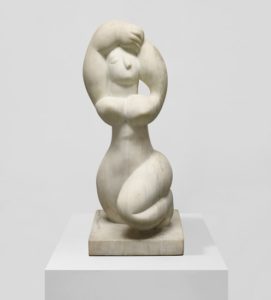Dear Artist,
Among the more valuable skills is the ability to render forms. To get them right painters of other times laboured over spheres, cones and blocks. While it’s not always expected in today’s art, form-finding is well worth revisiting. Here are a few thoughts:
Complex forms need to be reduced to the simple and basic. The human face, for example, is a daunting combination of many. An experienced eye can see at a glance which figurative artists have an understanding of those basic forms. Also, there’s a difference between “observed form” and “developmental form.” To get an idea of this there’s a simple exercise: Lay your hands on an ordinary rock, set it on a ground, light it and copy it. Leave out ancillary elements like moss or texture. Just stick to copying the form. Now try painting a similar rock from your imagination. There are several things you need to do here. You need to let your imaginary rock-in-progress tell you what it needs in order to be more rock-like. Half close your eyes and let your painted rock talk to you. Let your brush find the form. Think of light, shadow, plane and heft. Very often it’s this second exercise that builds the more convincing thing called “rock.” Actually, this ability to produce developmental form is one of the main characteristics of professionalism. Call it “creativity” or just “thinking on your feet” — this is the action that gives both joy and integrity to your work. As the sculptor said, “It’s simple — you just chip away everything that doesn’t look like a horse.” Trouble is, it’s not simple — for most of us it’s hard won.
Here’s another thought: Form is an illusion. Picasso noted that “forms are more or less convincing lies.” No matter what an artist’s style or inclination, the idea is to find your own way of telling lies. I’m sorry to tell you this, but there’s truth in foolery. One way to do this is to “over-ripen” your forms. As the French cubist sculptor Henri Laurens said, “My aim is for ripeness. I want to make my forms so full, so juicy that one could add nothing more to them.” Another way is understatement. If you’re into exercises, try making convincing forms in as few strokes as possible. Paucity finds forms faster. As most everyone knows, I’ve just spent a couple of weeks with my nose up against the Russian masters. Sketches and exercises abound in the museums of Moscow. I learned that in finding form, it’s never too late for exercises.
Best regards,
Robert
PS: “Draw with the brush. Carve the form. Don’t be carried away with the subtleties of modeling and nice pigmentation at the expense of losing the form. (John Sloan)
Esoterica: There’s something to be said for getting into the “feeling zone.” This is where you experience the solidity and the weight of the rock. You sort of get inside the part of the work you are working on. Rock or feather, sky or water, tree or idea-of-tree, there’s a form to be felt. “Work from the pithy eye out. Swimming in language sea. Something that you feel will find a form.” (Jack Kerouac)
This letter was originally published as “Finding form” on May 20, 2005.
Have you considered a Premium Artist Listing? With each letter, an artist is featured at the bottom of this page. The Premium Artist Listings are a means of connecting artist subscribers through their work. Proceeds from each listing contribute to the production of The Painter’s Keys.
“Let cloud shapes swarm, / Let chaos storm, / I wait for form.” (Robert Frost)







8 Comments
I wouldn’t call it lying. I would call it artists renderings. We take from real life, then we change it, or fictionalize it, if we want to. It is called using the imagination. And, yes, creativity!
Very insightful description of a phenomenon that almost cant be described: “seeing without seeing…” “Feeling one’s way through the creation of light and solidity.” I’ve known that I’m doing this, but (until now) would not be able to describe it to anyone. Thank you for this , Sara.
Such a valuable message in this one. I look back on my own early works and see an obsession with painting exactly what I see with small brushes. I’m not sure when the form-light went on, but whenever it did, painting became a whole lot easier.
Many paintings have been so flat, I could have belonged to the Flat Earth Society. I love working large, and in the past two years, clouds, rocks, rivers, trees, are breathing into life because I paint them as shapes and forms, not things. While the left brain may yell at me, the flow from the left brain merges with the right brain, and the creative flow takes shape. Thank you for this one, Sara!
This one has such a meaningful message. When I look back at my early paintings, I realize that I was obsessed with using tiny brushes to paint exactly what I saw. Painting became much simpler when the form-light turned on, though I’m not sure when it did. mapquest driving directions
Your help and insight have been tremendously appreciated. I want to express my deepest gratitude for all the help you’ve given me with your vast resources.
This resonates deeply with my art journey! I’ve found that “letting the work speak” often happens during those late-night creative sessions when my mind is relaxed. The concept of “over-ripening” forms reminds me of perfecting shots in Basketball Stars – sometimes you need to push beyond what feels complete to achieve true mastery. Thank you, admin, for sharing such thoughtful content that bridges technique with philosophy.
Your insights on form and creativity resonate deeply. I recently tried sculpting, and it was eye-opening to see how rough edges can transform into something beautiful with just a few thoughtful strokes. If you’re exploring your artistic side, I highly recommend the Suika Game platform. It offers a unique environment to experiment and play with different forms, enhancing personal expression in a fun way.